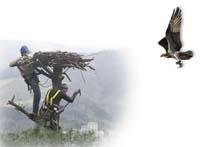Citizens of patiamarillos
2008/12/01 Etxebeste Aduriz, Egoitz - Elhuyar Zientzia Iturria: Elhuyar aldizkaria
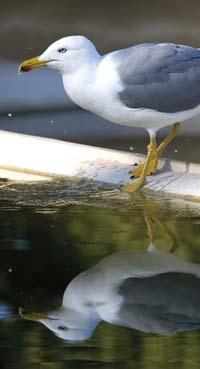
Gulls are opportunistic birds. Although they are designed primarily for the exploitation of marine resources, they practically do not die of anything edible. In addition, they are a little daring and, like many other opportunistic animals, have found hayedo near the human being.
"Where there is a person, surely there is something to eat" can be the golden rule of rats, mice, doves and many animals who have opted to live close to the human being. Also of gulls. In Euskal Herria, the yellow duck gull (Larus michael hellis) is the most abundant gull among gulls, and knows well the prosperity of people.
According to data from the Sociedad de Ciencias Aranzadi, in the last 30 years the population of yellow gull has tripled in the Autonomous Community of the Basque Country. Something similar has happened throughout the Iberian peninsula. This demographic growth is causing a series of problems, among which is the emergence of new colonies on urban rooftops, which have carried out population control actions in some places. For this purpose, in October the Aranzadi Science Society organized a day.
One of the objectives of the day was to analyze the causes of demographic growth of patiamarillas gulls. It must be said, however, that the yellow yard is not the only marine bird that has grown in recent years. A study by the biologist of the Mediterranean Institute of Advanced Research of the CSIC (Imedea), Daniel Oro, reveals that nine other species have grown so much or, in some cases, much more. However, the population of these legs is much higher than that of other species, so it is more accused than the rest.
In the Autonomous Community of the Basque Country there are about 5,000 couples, most of them in Bizkaia. The largest colony is located on the island of Izaro, with more than 1,000 couples. And the largest of Gipuzkoa is that of Ulía, with more than 500 couples.
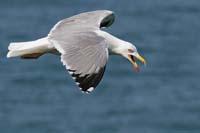
These numbers are reduced compared to Galicians. There live 60% of peninsular gulls. Jorge Mouriño de Arcea Xestion de Recursos Naturais, from Galicia, explained that from 1975 to the 90's they passed from 10,000 to 50,000 couples. And then, despite a certain stabilization in the number of gulls, the number of colonies has continued to grow.
Fishing and landfills
During the day, several reasons were presented to explain demographic growth. But the main one was the availability of food. On the one hand, fishing discards occupy a large part of the gulls diet. There is no more to look at the fishing boats that work in the sea; surely the patiamarillos are near, waiting for surplus fishermen.
On the other hand, our landfills have become true self-services that feed daily in landfills. Aitor Galarza, from the Bizkaia Provincial Council, showed the evolution of urban solid waste in Bizkaia: Scarcely 300.000 tons in 1983, currently exceeding 700.000 tons. Galarza sees it clear: "If one wants to control the population of these animals it is necessary to intervene in dumps".
On the other hand, in the postwar years, it was customary to eat eggs of gulls and chickens. Even the disappearance of this pressure may have its importance, even to a lesser extent, not only in the growth of the population but also in the approach to cities. Galarza said: "They initially nidified on inaccessible islands for predators, including humans. Later they began to colonize islands, conflicts, etc., more accessible, such as Gaztelugatxe or Arratia de Getaria. And in recent years they have also begun to nidify in constructions".
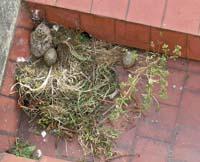
The proliferation of gulls can cause problems. On the one hand, the ecological ones, because the balance of the ecosystems is lost. Studies carried out especially on the Mediterranean coast show a radical transformation of vegetation. It has also been mentioned that they cause damage to other species of birds, although in many cases the investigations have rejected. But those who have given the alarm are very diverse damages: social and economic damage to human beings.
Roofs of roofs
The first known case on the rooftops of the CAPV dates from 1994, in Bermeo. Later they appeared in Mundaka and the abandoned Lemoiz nuclear power plant. "There they have no problems," says Galarzak-, "but now they have also begun to nest in the Nervión estuary, which can be worrying: a couple in Sestao, another in Portugalete..."
One of the attendees brought to the table the pavilions of the port of Pasaia. It is said that the manure of the gulls causes problems of corrosion in the plate of the pavilions. But there they have found the solution. Strategically, nylon threads have been placed on the roofs of the pavilions.
The pasaitarras saw in Vigo the nylon system. No wonder, in the CAPV there are still only cases in which the nest of the roofs is unique, but in Galicia there are 30 colonies on the rooftops of cities and towns. A data provided by Mouriño: "In the story we made this year we counted 1,023 couples on the rooftops of Vigo."
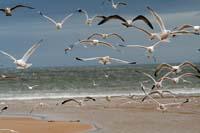
Seagulls on the rooftops cause problems for the neighbors. On the one hand they are very noisy, especially when they are with chites. In addition, they dirty roofs and facades. Sometimes gutters are blocked and moisture problems occur in the houses. And when they are with chites they can also be aggressive. For this reason, before the complaints of the neighbors, the administrations have carried out actions of control of the populations of the roofs in Vigo, Ferrol, La Coruña and Viveiro.
Unnecessary efforts
These actions have consisted in removing the eggs and nests from the roofs. But, according to Mouriño, this serves for little: "All over the world it has been seen that this does not serve at all, much money is spent and at the end of the action is returned to the first. It is throwing money and the money is not enough for environmental and conservation actions."
The Asturian ornithologist César Álvarez agrees on this. Similar actions are also taking place in Gijon and Aviles. "Every year the municipalities spend millions," says Álvez-, "but all efforts are useless: urban populations continue to grow. The gulls are very cooked. For example, the same couple has had to remove the nest three times, and they are also those who have continued to do so in the same place for ten years after removing the nest every year."
In Mouriño's opinion, the elimination only makes sense in the case of specific nests that have provoked complaints. The measures to be adopted must be different. "In some cases systems like nylon are valid as long as they are properly placed. But the important thing is prevention. As in all biological invasions, if it influences the initial phases, it will triumph. When a colony is consolidated, very little can be done."
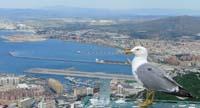
For this reason, for Mouriño it is important that the municipalities that do not have a colony establish a surveillance system and that once seen the first nests withdraw them. "It is cheap and efficient. When the gulls have only begun to nest, if they see that place is not good, they will go elsewhere."
On the other hand, in the day it was agreed that in the natural colonies it was not convenient to carry out control actions, unless there are scientific evidence that endangered some ecological value. However, the condition to natural colonies is very difficult. A poster of the day had an experience in the Chafarinas islands. There they dedicated several years to killing the patillones, but it did not serve for anything; a few years after the action, it was already in the past. "In these subjects, two plus two are not always four," says Álvarez. The dynamics of the populations is complex, the populations have regulatory mechanisms".
"To solve the problem, we have to solve, according to Mauritius, the origin of the problem. It is essential to restrict access to landfills, regulate fishing discards and keep cities and ports as clean as possible. Today, the cities are a privileged place for the gulls. Scientifically it is shown that reproductive success is significantly greater in urban colonies than in natural ones." We have put the food in front of the peaks. And it seems that this is the origin of the problem.
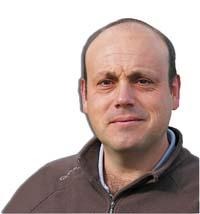

Gai honi buruzko eduki gehiago
Elhuyarrek garatutako teknologia




